Heat Transfer: Free & Forced Convection
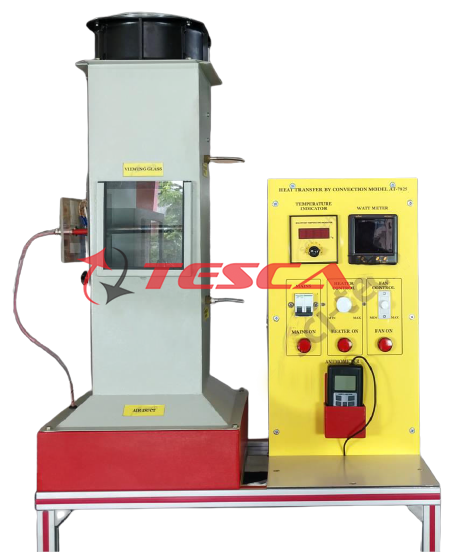
Order Code: 32269
Category: Thermodynamics Lab
Features Heat Transfer is an important subject in Engineering and Technology. Proper understanding of the heat transfer phenomena is essential to solve any research, design and development problem involving heat flow. Heat is transmitted...
SPECIFICATION
Features
Heat Transfer is an important subject in Engineering and Technology. Proper understanding of the heat transfer phenomena is essential to solve any research, design and development problem involving heat flow. Heat is transmitted through conduction, convection and radiation.
Convection is an important mode of heat transfer in liquids and gases.
Free convection is a heat transfer process in which the density gradient and hence the gravity forces plays an important role in the movement of the fluid particles. In forced convection process, the movement of fluid particles is due to inertia forces caused by some external means such as fan, blower etc., and the rate of heat transfer is significantly larger as compared to that in the free convection process. Convection heat transfer depends upon several geometric and flow parameters and fluid properties. Proper understanding of the effect of these parameters is essential to design any heat transfer device. Study of free and forced convection is of interest to the students of all branches of Engineering and Technology including Mechanical, Chemical, Automobile and Aerospace Engineering.
Tesca Free and Forced Convection Heat Transfer Unit is a bench top unit with observation windows and is designed to enable students to study both free and forced convection heat transfer processes from the flat plate, circular cylinder in a tube bundle and the tapered fin. The design is modular in construction and there is a provision to change the heat transfer surface easily in the unit. The unit consists of a vertical square duct in which air flow is obtained by means of a variable speed axial flow fan to carryout forced convection experiments. Honeycomb and screens are provided at the inlet of the duct to straighten the air flow. The flat plate, cylinder and tapered fin models are electrically heated using a variable heater and the temperature of the heat transfer surface can be limited using thermostats. The fan can be switched-on for forced convection experiments and switched-off for free convection experiments. There is a provision for the measurement of temperature of the heat transfer surface and the surrounding air inside the duct using temperature sensors. Air velocity inside the duct is measured using sensor. The control panel houses heater and fan speed controls, digital displays of fan speed, surface and surrounding temperatures, air flow velocity, switches and fuses.
Experiments
1. Demonstration of the basic mechanisms of free and forced convection.
2. Determination of free and forced convection heat transfer to air from vertical flat plate.
3. Determination of free and forced convection heat transfer to air from circular cylinder in a tube bundle.
4. Determination of free and forced convection heat transfer to air from tapered fin.
5. Determination of co-efficient of heat transfer in all cases and comparisons with empirical relationships.
6. Study of Reynolds number, Prandtl number and Nusselt number correlations for forced convection.
7. Study of Grashoff number, Prandtl number and Nusselt number correlations for free convection.
Standard Specifications (Custom Built Specifications available)
1. Air duct, vertically placed, 1.2 m long, 120 mm square cross section with honey comb and screen at inlet, max. air flow velocity: 15 m/s.
2. Variable speed axial flow fan with speed controller.
3. Flat plate with heater, copper, 100 mm X 150 mm.
4. Circular cylinder with heater, copper, in tube bundle, total surface area of tubes: 0.1 m2.
5. Tapered fin with heater, copper, surface area: 0.16m2.
6. Heater elements, (3 Nos.). 200 W, max. temp. 1250C with temperature controller.
7. K-type thermocouples, (3 Nos.) 0-1500C.
8. Air flow velocity sensor, 0 – 20 m/s.
9. Hand held temperature sensor.
10. Control panel with digital display of measured parameters.
Options
1. Exchangers:
- Single tube exchanger: one exchangeable plate made of Teflon with flat surface with a central bore to install the single tube heating element.
- Pinned (multi-tube) exchanger: one exchangeable plate made of Teflon with 27 fixed tubes made of PVC of 16 mm. approximately of diameter arranged in an equilateral triangle. The tubes are arranged in six rows and there is a removable tube close to the center of each row. It can be replaced by the heating element to measure the effects of the rows of adjacent tubes on the heat transfer rate of the heating element.
2. Computer based data acquisition: Advanced Real-Time SCADA and PID Control. Open Control + Multicontrol + Real-Time Control.
Control Software .
NI or ‘Sci-Cal’ Data Acquisition board (250 KS/s, kilo samples per second). Calibration exercises, which are included, teach the user how to calibrate a sensor and the importance of checking the accuracy of the sensors before taking measurements.
3. Projector and/or electronic whiteboard compatibility allows the unit to be explained and demonstrated to an entire class at one time. Capable of doing applied research, real industrial simulation, training courses, etc.
4. Remote operation and control by the user and remote control for technical support
5. Computer Aided Learning (CAL)software helps the user perform calculations and comprehend the results.
6. Interface In-built Module:
This control interface, common for the ‘Tesca’ Heat Exchangers and can work with one or several exchangers.
The Control Interface is part of the SCADA system.
Control interface with process diagram on the front panel.
The unit control elements are permanently computer controlled.
- Simultaneous visualization in the computer of all parameters involved in the process.
- Calibration of all sensors involved in the process.
- Real time curves representation about system responses.
- All the actuators’ values can be changed at any time from the keyboard allowing the analysis about curves and responses of the whole process.
- Shield and filtered signals to avoid external interferences.
- Real time PID control with flexibility of modifications from the computer keyboard of the PID parameters, at any moment during the process.
- Real time PID control for parameters involved in the process simultaneously.
- Proportional control, integral control and derivative control, based on the real PID mathematical formula, by changing the values, at any time, of the three control constants (proportional, integral and derivative constants).
- Open control allowing modifications, at any moment and in real time, of parameters involved in the process simultaneously.
8. Heat transfer surfaces having specific requirements of the user can be supplied on request.
Services Required
Single phase mains electrical supply: 220-240 V, 50 Hz.
Overall Dimensions
Length: 800mm, Width: 400mm, Height: 1500mm.
The manual describing the theoretical and practical aspects of the apparatus, operation and maintenance will be supplied with the equipment.

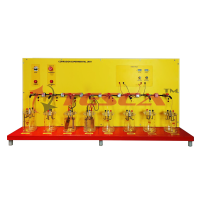
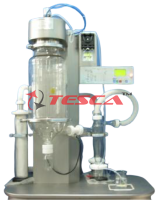
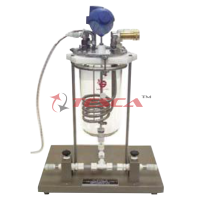
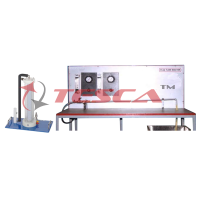
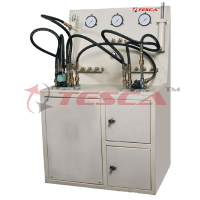
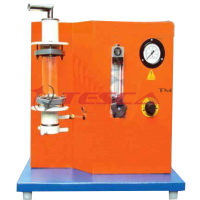
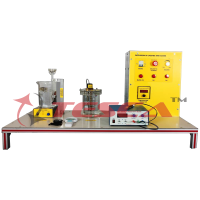
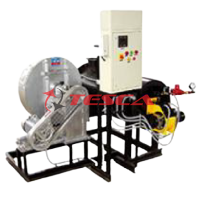
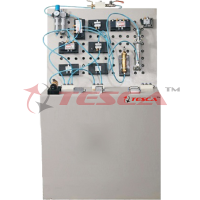

 91-9829132777
91-9829132777